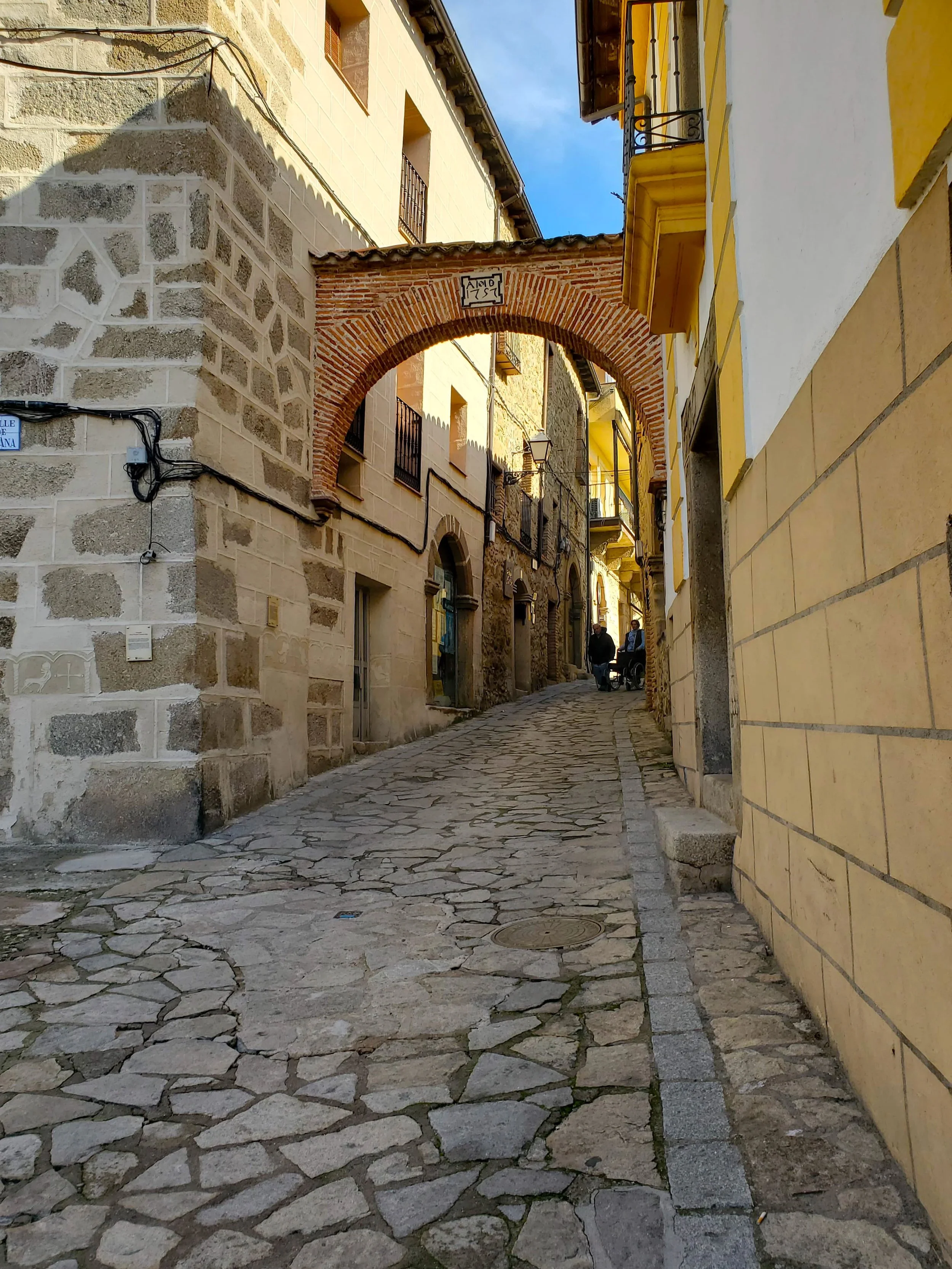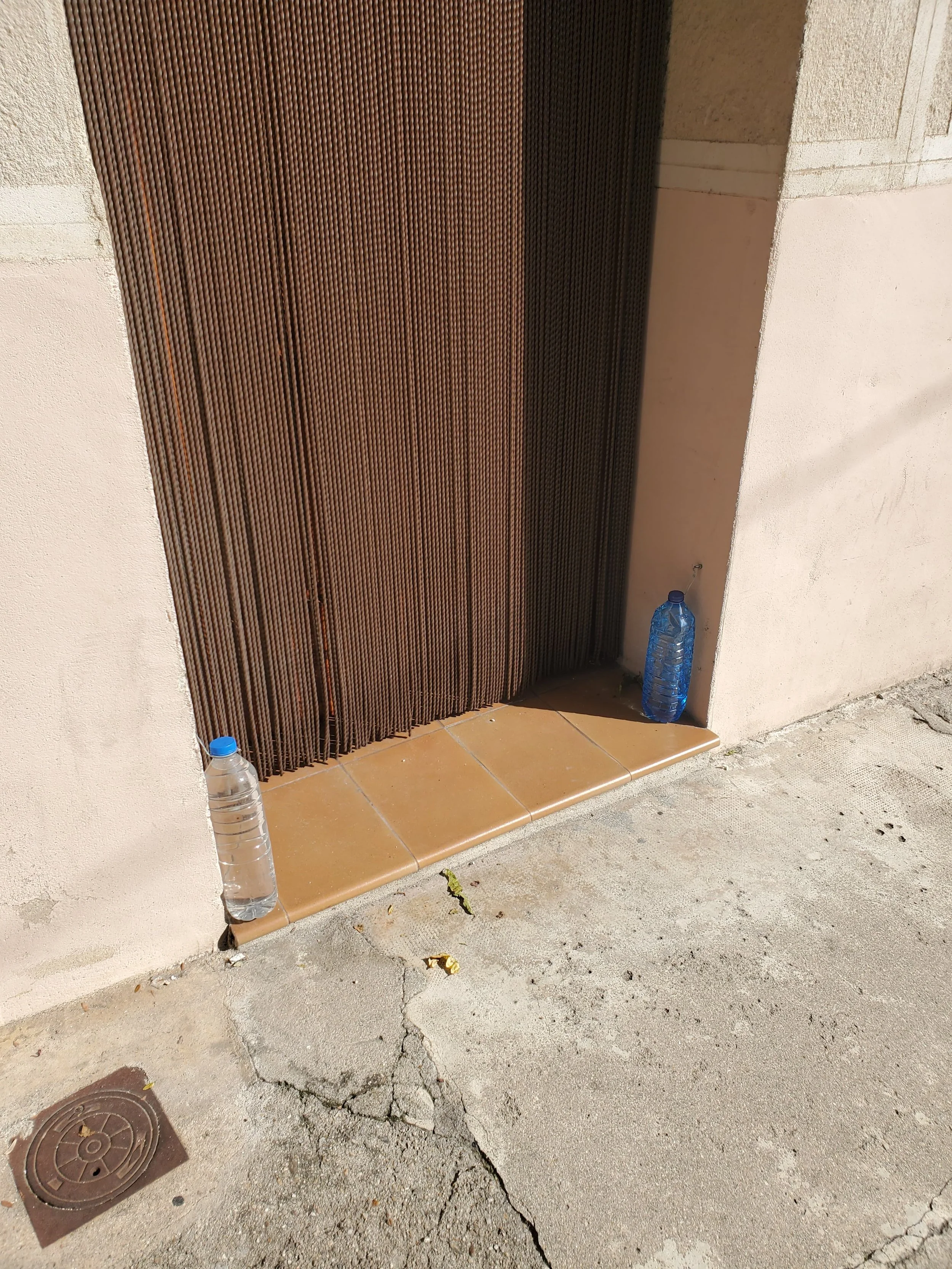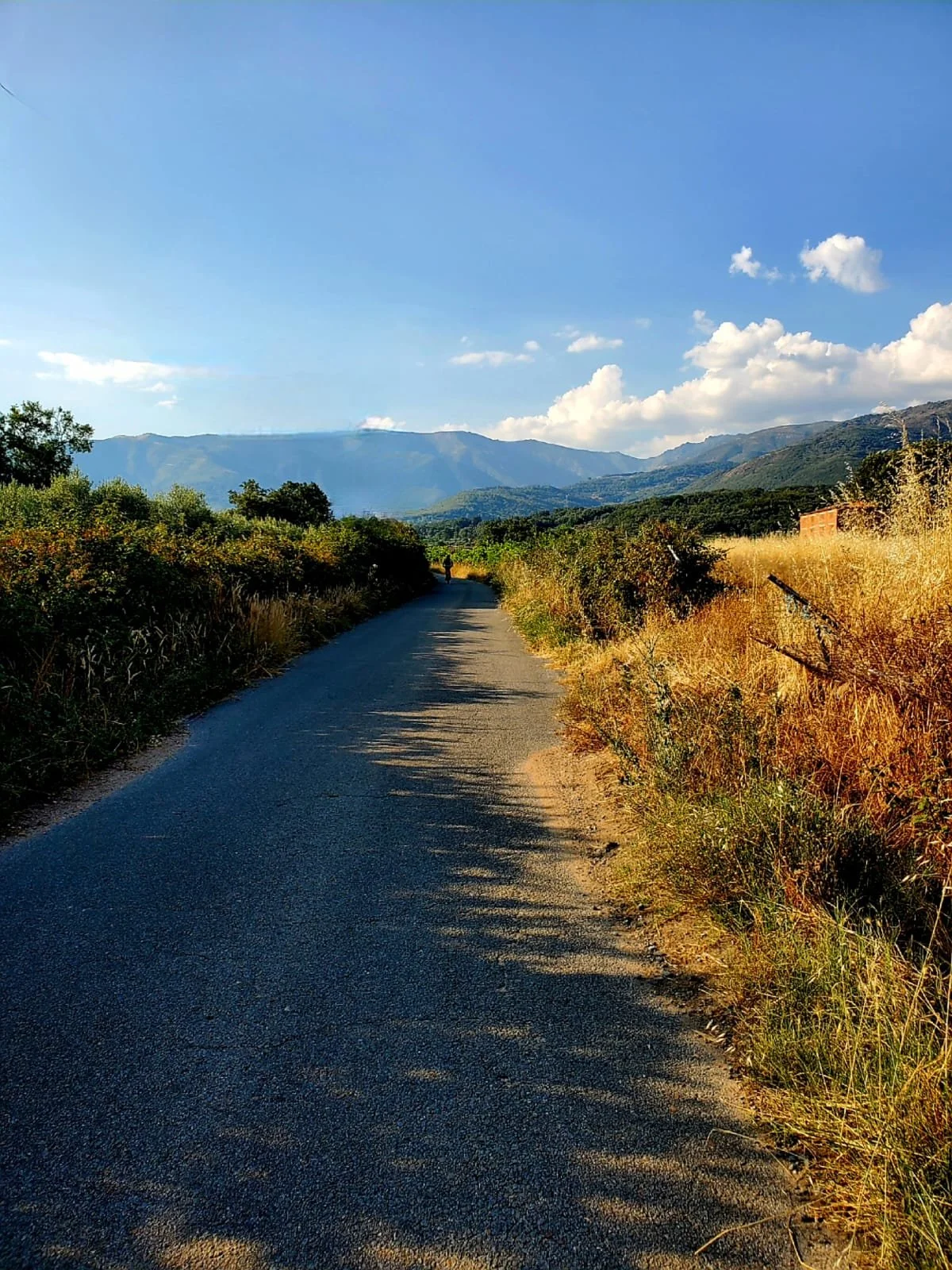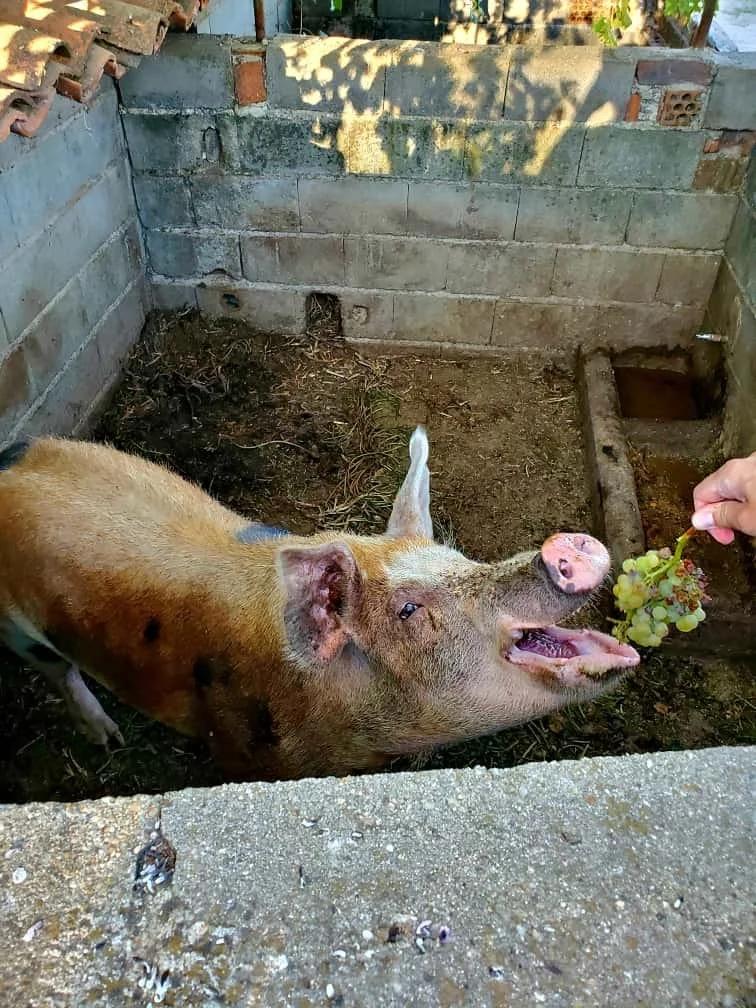Click here to read the previous post, Adjusting to Life in Spain: Visiting Seia, Portugal
Last weekend, fresh off the train from Alcalá de Henares a couple weeks prior*, I eagerly packed my knapsack for a new adventure to a small town (the original title for the Julia Louis-Dreyfus show The New Adventures of Old Christine). Well, maybe not “new,” since I’d been to Jarandilla de la Vera before with Alberto, the man I’m dating (the artist formerly known as “A”). But always an adventure.
We were both looking forward to a quiet, relaxing weekend out of the big city and set out (not via train, but in a car this time, oooooh) Friday afternoon.
* Note: I took this trip in the summer but am just posting it now, so it’s chronologically out of order, according to the “click here to read the previous post” claim at the top (in case you care about such details).
A Little Bit About Jarandilla de la Vera
Jarandilla de la Vera is a small town in Cáceres province, Extremadura, Spain which has a population of about 2,845. (Fun fact: The population of Jarandilla was 3,080 as of 2005, and 2,845 as of 2024, which means it decreased about 7–8% over nearly two decades.) (Ok, maybe I need to look up the definition of “fun fact”.)
Jarandilla de la Vera, Cáceres, Extremadura, Spain. There are a lot of words in this destination so, for those of you who are word and/or geography nerds, let’s just break it down real quick:
Jarandilla: Jaranda is the name of the Garganta Jaranda, the gorge that runs through the town. And the suffix -illa is a common Spanish diminutive, so Jarandilla could be interpreted as “Little Jaranda.”
La Vera: In Spanish, vera means the edge or side of something, such as the bank of a river (a la vera del río). “La Vera” is also the name of this region in northern Cáceres (don’t you worry, we’ll get to this word in a minute), on the southern slopes of the Sierra de Gredos, which is known for gorges (gargantas), rivers and greenery.
So Jarandilla de la Vera translates to “Little Jaranda of the Vera region” or, if you want to get more poetic about it, “Little riverside village among the flowering hills of La Vera.” (Aren’t you glad you stayed for this?)
If this is boring, feel free to skip ahead. I’ve fallen into a semantic rabbit hole and I can’t get out!
Cáceres: A province of western Spain that makes up the northern half of the autonomous community of Extremadura. (Its capital is the city of Cáceres, which was founded by the ancient Romans and encircled by 12th-century Moorish walls.)
Extremadura: One of Spain’s 17 autonomous communities (each of these communities has its own executive, legislative and judicial powers), which borders Portugal and comprises the provinces of Cáceres and Badajoz. (Speaking of those industrious Romans, the capital of Extremadura, Mérida, is known for Roman ruins of Augusta Emerita.)
Well, that ought to do for today’s geography lesson. Just be glad I didn’t carefully document every step of a metro/train/bus trip this time!
Getting to Jarandilla
From Madrid to Jarandilla by car without traffic it takes a little over two hours, but we took a half-hour detour to get off the main highway and take a more scenic route.
As we got closer to the town, we stopped to pick up a hitchhiker, a custom that has gone the way of the rotary phone back in the U.S. or Canada. For 10-15 minutes, we heard the story of this trans Gypsy who was coming back to visit family after many years away. Well, Alberto heard the story. I heard my non-native language spoken in a rapid mumble.
Shortly after, we arrived in Jarandilla, a small, picturesque town surrounded by mountains, gorges/rivers, and chestnut and oak forests.
Source: Google Maps
Aside from its natural (as in nature) beauty, it’s also known for its pimentón de La Vera (smoked paprika) and the Parador de Jarandilla—a medieval castle turned hotel, subtitled “The refuge of Charles V” because this is where Emperor Charles V stayed.
Source: Parador de Jarandilla
The town is surrounded by rivers…
Source: Google Maps
It has narrow stone streets…
Warm local culture… (oh, wait, that’s us!)...
And hosts the spectacular Los Escobazos festival every December, where villagers parade with flaming brooms and take “playful” whacks at each other (I’ll be going with A, so if I survive, more on that next month!).
I also learned about the custom of placing a bottle or two of water in the doorway of houses to prevent cats and dogs from peeing on your front step (apparently they do this in other countries, too, like Japan and Italy).
Overall, Jarandilla is a quiet, scenic, traditional Spanish mountain town with interesting history and beautiful nature. Perfect for a weekend getaway.
As you can see in the picture above, we enjoyed a vermouth (or two…hundred) while sitting at an outdoor table of a local (what other kind is there in a small town?) bar, one night being joined by some friends of A’s.
Swimming in the River
Because I now own a bathing suit, I am required by law to use it. So use it I did! A and I packed a knapsack and then cycled about thirty minutes to an out-of-the-way river. We had also swam in one of the in-town rivers, but those are generally more packed with people.
We arrived at what looked like a dead-end dirt path, parked our bikes against a tree, then hiked down a path through brush and trees that opened up into the mouth of a river. There were only a couple of people here, and all of them were quiet and respectful.
After the sweat-inducing bike ride, we jumped into the deliciously cool river where we frolicked and swam and I tried to avoid the fish darting between my legs. A taught me to dive and to float on my back, two skills I’d never learned in all my swimming lesson. (Yes, singular. I only had the one.) We had a picnic in the shade of a tree that included vermouth (like any good Spaniard), then laid on the rocks to dry out in the sun.
We cycled back home…
Stopping to feed grapes to a pig…
And admire some old rustic buildings…
And, finally, we enjoyed a barbecue on the terrace of A’s house in the warm, summer evening, while chatting, laughing and drinking some excellent tempranillo wine (you thought I was going to say vermouth, didn’t you?).
Hiking Around Jarandilla
Jarandilla is a great place for hiking because it’s surrounded by gorges, waterfalls and chestnut forests. Some nice hikes right outside town (note: we did some of these hikes on other weekend trips here) include:
1. Ruta de los Puentes (the two medieval bridges)
Distance: ~6–8 km
Why it’s great:
Starts right from Jarandilla
Passes the Puente Parral and Puente del Sacristán, both medieval stone bridges
Easy, scenic, and follows the river with pools and small cascades
Perfect for: a relaxed but beautiful half-day walk.
2. Garganta Jaranda (up to the Natural Pools)
Distance: variable (you can go 3 km or 12 km)
Why it’s great:
Follows the gorge that gives Jarandilla its name
Crystal-clear water, chestnut and oak forests
Natural pools and wooden footbridges
Fresh even in summer
Perfect for: people who want scenery close to town without a big climb.
3. Ruta Carlos V (section from Jarandilla to Yuste)
Distance: ~6 km one way
Why it’s great:
Historic route Carlos V walked on his way to the monastery (more on that in my next Jarandilla post)
Mix of forest paths, stone walls, and views of La Vera
Ends at the Monastery of Yuste
Perfect for: a moderate, meaningful hike with history built in.
4. Jarandilla to Guijo de Santa Bárbara (and waterfalls)
Distance: 10–16 km
Why it’s great:
Climbs into the Sierra de Gredos foothills
Amazing views over La Vera
Passes gorges and small waterfalls
Guijo is a charming little mountain village
Perfect for: those who want more elevation and mountain atmosphere.
5. Ruta del Emperador (full route)
Distance: ~12–14 km
Why it’s great:
Follows Emperor Carlos’ entire path through the valley
Stone paths, forests, rural landscapes
Has an annual pilgrimage/festival each February
Perfect for: a full-day, iconic La Vera hike.
German Soldiers Cemetery
In addition to hiking in nature that surrounds the pueblo, we stopped to visit the German military cemetery about 9 km/5 miles outside of Jarandilla, very close to Monasterio de Yuste. It’s a cemetery that holds the remains of about 180-200 German soldiers who died in Spain during World War I and II.
It’s the only cemetery in Spain dedicated exclusively to German military dead of the world wars. I wondered why there was a specific German cemetery in this country, but it’s just because it was where all these German soldiers died while fighting in these wars. The National Commission of German Cemeteries decided to assemble scattered remains from across Spain into one memorial cemetery. They started gathering and relocating bodies in 1980, with the official inauguration of the cemetery in 1983.
We were the only people there that afternoon and, as with any cemetery, it made me quiet and somber. It’s a lovely setting with plenty of trees and grass and the mountains beyond. And in the foreground are straight rows of graves in the shape of crosses, some of which are marked “Ein Unbekannter Deutscher Soldat” (“An unknown German soldier”).
Source: Viajes y Lugares
As Viajes y Lugares put it so elegantly, “Beyond the injustice of the War, beyond the fact that we are pawns in the hands of those who promote them... It is overwhelming to see on the simple dark granite tombstones that most of them were not even 20 years old.”
Then the weekend was over and we drove home, contented, Sunday night.
But we would be back!
Click here to read the next post, Adjusting to Life in Spain: Weekend Trip to Jarandilla de la Vera (Fall)
Note: All photos taken or created (using DALL-E) by Selena Templeton, unless otherwise noted.
If you enjoyed reading this travel blog, check out some of my other adventures:
Adjusting to Life in Spain: Dating in My Non-Native Language
Adjusting to Life in Spain: Using the Spanish Healthcare System
Adjusting to Life in Spain: Damn, I Can’t Find My Favorite Products Here!
From Fiesta Invites to Flamenco Nights: My Adventure in Spain
My Road Trip to the Four Corners: Utah, Colorado, New Mexico, Arizona















